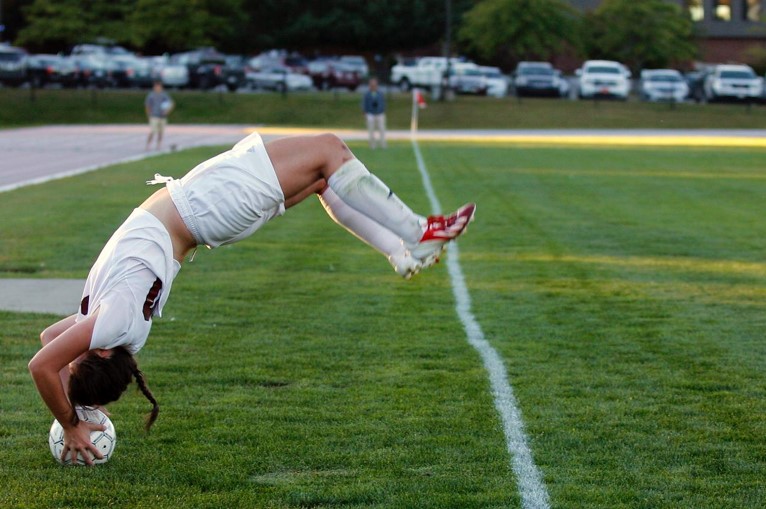One of the most frequent excuses I hear from would-be innovators for their inability to shift from their current situation relates to regulation: ‘We can’t possibly change the design, because the regulations don’t allow it’.
To which my stock response has become to show them this video: https://www.youtube.com/watch?v=rzpB7ZhO3Dk
The rules of football are very clear. The rules for throw-ins are also very simple:
At the moment of delivering the ball, the thrower:
- faces the field of play
- has part of each foot either on the touch line or on the ground outside the touch line
- holds the ball with both hands
- delivers the ball from behind and over his head
- delivers the ball from the point where it left the field of play
These are the rules. And they become the limiting factor when a footballer desires to throw the ball further than the opposing players might expect to be possible: we’d love to throw the ball further than anyone else, but the regulations prevent us.
Now one plausible response to this situation might be to appeal to the football regulators asking for a rule change. Another – usually more immediately effective one – is to recognize that we have a contradiction. And then to go and see how others have already done some hard work to solve that contradiction for us.
Here’s how we might map the longer-throw-in-versus-regulation problem onto the Contradiction Matrix:
Interesting to note how the amazingly inventive, fully regulation compliant, throw-in solution in the video offers us such an elegant illustration of Inventive Principles 15 (Dynamics – move from a stationary (feet) to dynamic situation) and 14 (Curvature – switch to a rotating motion).
We often assume that the Contradiction Matrix comes from patents and is to be used for difficult technical problems. But, as we see here, it also comes from studying anyone anywhere that’s determined to break the rules without breaking the Rules.


